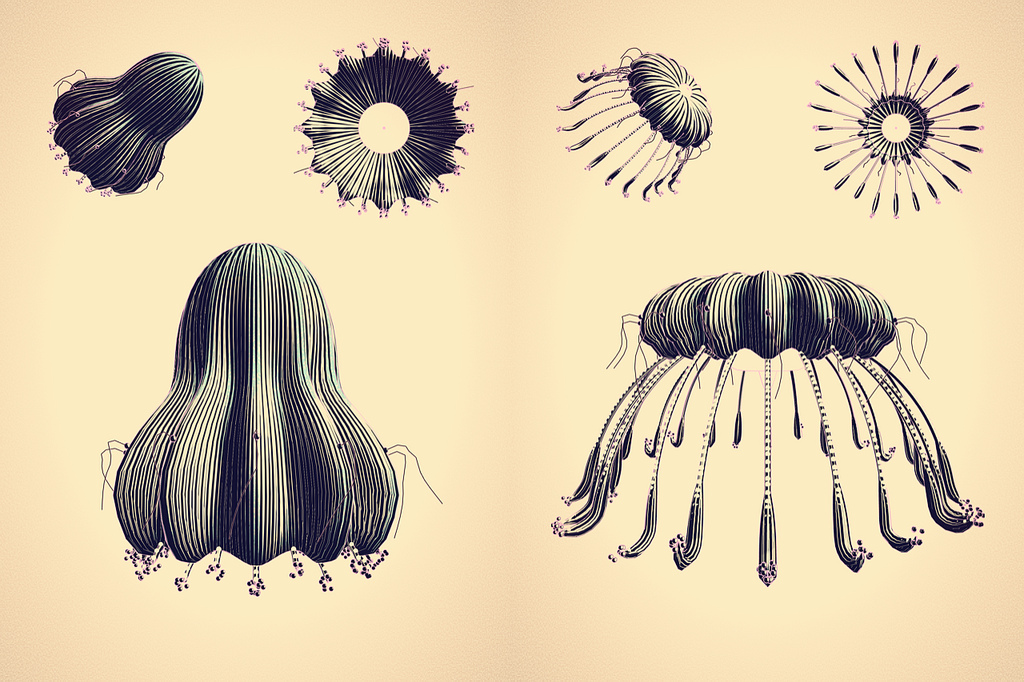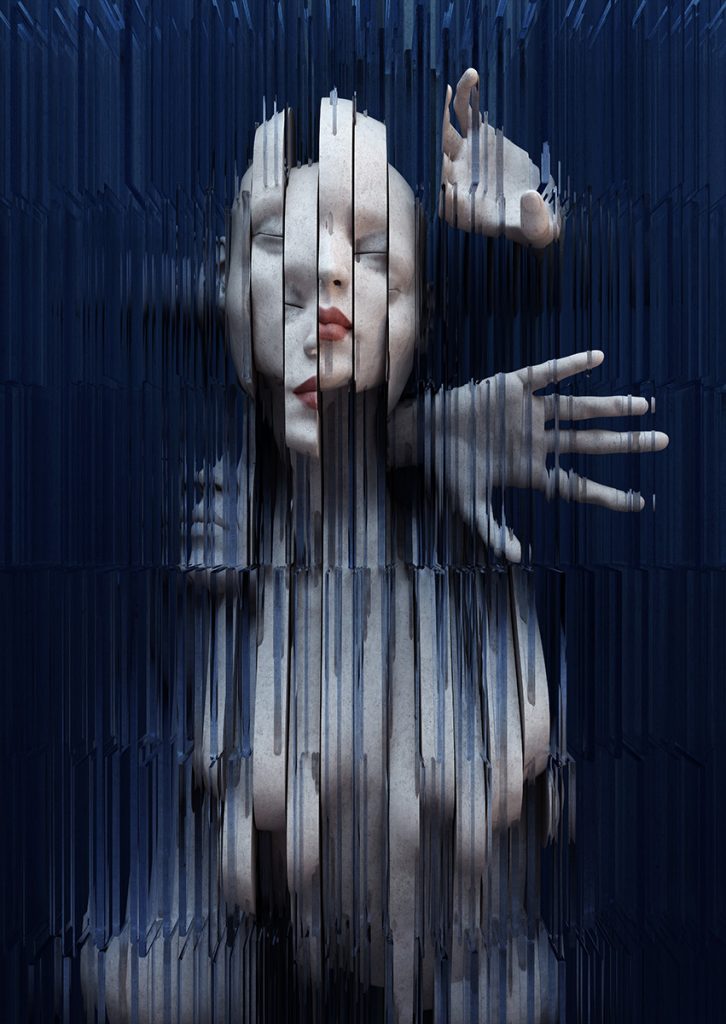var offset=35
function setup() {
createCanvas(600, 600);
background(255, 255, 255);
}
function draw() {
//rectangle(0,0,600,600);
fill(100,150,255);
noStroke()
quad(0,0,0,600,150,600,150,0);
quad(600,0,600,600,600-150,600,600-150,0);
quad(600,600,0,600,0,400,600,400);
quad(600,0,0,0,0,200,600,200)
//face
stroke(25);
strokeWeight(8);
ellipse(150,280,5,15);
ellipse(600-150,280,5,15);
noStroke();
fill(221,190,140);
quad(150,430,240,550,600-240,550,600-150,430);
quad(150,430,150,330,190,330,190,430); //
quad(190,330,200,340,200,430,190,430);
quad(200,340,600-200,340,600-200,430,200,430);
quad(600-150,430,600-150,330,600-190,330,600-190,430);
quad(600-190,330,600-200,340,600-200,430,600-190,430);
quad(260,340,270,330,270,430,260,430);
quad(600-260,340,600-270,330,600-270,430,600-260,430);
quad(270,340,600-270,340,600-270,200,270,200);
quad(150,330,150,200,190,200,190,330);
quad(150,330,150,200,190,200,190,330);
quad(600-150,330,600-150,200,600-190,200,600-190,330);
quad(150,200,600-150,200,600-150,290,150,290);
//quad(150,430,150,200,600-150,200,600-150,430);
stroke(25);
strokeWeight(3);
line(150,430,150,200);
line(150,430,240,550);
line(240,550,600-240,550);
line(600-150,430,600-240,550);
line(600-150,430,600-150,200);
noLoop()
//nose
stroke(25);
strokeWeight(4);
fill(226,180,113);
ellipse(300,400,50,50);
noStroke();
fill(221,190,140);
quad(250,400,350,400,350,350,280,350);
//mouth
stroke(25)
fill(226,134,113);
ellipse(300,470,100,50);
line(300-50,470,300+50,470);
noStroke();
fill(221,190,140);
quad(240,468,360,468,350,430,250,430);
//Hair
fill(0)
quad(270,220,290,160,490,140,450,200);
quad(270,220,290,160,480,100,450,200);
quad(270,220,290,160,450,90,450,200);
quad(270,220,290,160,410,85,450,200);
quad(270,220,150,200,120,140,290,160);
//Lense
//noStroke()
//fill(255)
//quad(190,290,190,330,270,330,270,290);
//quad(190,330,200,340,260,340,270,290);
//quad(600-190,290,600-190,330,600-270,330,600-270,290);
//quad(600-190,330,600-200,340,600-260,340,600-270,290);
loop()
strokeWeight(10);
stroke(100, 100, 100);
line(mouseX-10000, mouseY, mouseX+10000, mouseY)
noLoop()
//glasses
stroke(25);
strokeWeight(6);
line(150,270,190,300);
line(600-150,270,600-190,300);
strokeWeight(8);
line(190,290,190,330);
line(600-190,290,600-190,330);
line(190,330,200,340);
line(600-190,330,600-200,340);
line(200,340,260,340);
line(260,340,270,330);
line(270,330,270,290);
line(270,290,190,290);
line(600-200,340,600-260,340);
line(600-260,340,600-270,330);
line(600-270,330,600-270,290);
line(600-270,290,600-190,290);
stroke(25);
strokeWeight(7);
line(270,300,600-270,300);
//Lens Tint
//stroke(25);
//fill(255)
//strokeWeight(10);
//line(mouseX, mouseY, 0,0);
//fill(250, 240, 200);
//ellipse(300, 300, 400, 500,);
//line(300, 0, 300, 600,);
//line(0, 300, 600, 300);
//fill(255);
//ellipse(210,290,90,60);
//ellipse(600-210, 290, 90, 60);
//fill(0);
//triangle(210-offset,220,180-offset,260,310-offset,280);
//triangle(600-210+offset,220,600-180+offset,260,600-310+offset,280);
//ellipse(210,290,20,20);
//ellipse(600-210,290,20,20);
}
Month: October 2020
LO-01-Inspiration

I first learned about Micheal Hansmeyer’s computation architecture during a seminar that discussed modern fabrication techniques and its applications to architecture. The Subdivided Columns (2010-) explores the beauty in ordinary geometry and the ornate patterns it develops. This leap in fabrication and design may allow extremely delicate and detailed artforms in building designs. It may be a lower cost and effort way to reinstate the gothic period ornate church designs. Hansmeyer also explores other forms and structures through generative art, often creating detailed 3D printed forms for exhibitions. Hansmeyer prints the columns in 1mm layers and holds them together with a central rod in the middle. The Subdivided Columns project started in 2010 has led to many other projects such as Digital Grotesque (2013)and most recently Muqarnas (2019).
LO-05: 3D GRAPHICS
Rhinoceros 3D is a 3D computer graphics and CAD (computed aided design) software that was developed by Robert McNeel & Associates. Rhino utilizes four different viewports that assists in modeling in different window formats to allow 2D analyses to be made. Rendering and animation is a frequent use of Rhino as the enhancements and plug-ins make it very helpful.
Creators are not much limited in what they would like to accomplish within Rhino3D as third-party plug-ins and add-ons allow for different types of rendering and animation as the final product. While Rhino is quite frequently used in the context of architectural modeling, there are other means of use for architecture in industries such as industrial design, automotive design, produce design, as well as graphic design and multimedia. Because Rhinoceros allows for geometries to be mathematically precise based on the NURBS mathematical model, it helps for precise representation of curves and freeform surfaces in computer graphics.
LO-02-Generative Art
The subdivided columns projects by Micheal Hansmeyer are not only a leap in architectural construction but also in the way we think about design. Through division, Hansmeyer creates wonderful ornate patterns that envelop the space and overwhelms the audience’s sense of detail. So much is happening in that space that it is almost impossible to take in all that detail and comprehend the space. I feel that this level of attention to detail from the artist is very impressive. Hansmeyer employs an algorithm that divides space in order to create these ornate columns. The division allows the plan to create voids. These voids interact with solids to create boundaries. This system developed by division leads to infinite combinations of voids, boundaries, and solids. Since 2010, Hansmeyer has employed this technique in many other works. His work is understood as rule-based architecture that relies on mathematical parameters to build fascinating structures. In Muqarnas, Hansmeyer re-explore 11th century Seljuk dynasty typology through algorithms and rules he set up. This form of generative art allows him to further explore the interaction of space and voids
LO-03-Digital Fabrication
Similar to Micheal Hansmeyer’s Subdivided Columns, today I will be exploring another column design through computational fabrication. “Concrete Choreography” by ETH Zurich’s Master of Advanced Studies in Digital Fabrication program. Concrete Choreography can be compared to Hansmeyer’s Subdivided Columns in appearance as they are both ornate and have intricate patterns throughout; however, the construction methods are very different. Hansmeyer prints out sheets and links them together with a rod while the entire Concrete Choreography was 3D printed by one system. Through digital fabrication breakthroughs, ETH Zurich’s Masters students were able to revolutionize the construction of intricate material. The two main methods of digital fabrication are through subtraction or addition. ETH Zurich’s Masters students fabricated their columns through addition while Hansmeyer fabricated his work through subtraction. I admire the effort and innovation thinking that goes into Concrete Choreography and how it elevates the surrounding as a new one to fabricate buildings. This allows many new possibilities for material development and structural breakthroughs.
LO-04-Sound Art
The Weather Thingy is a custom built device that translates weather information into sound. I think this is a very crucial piece to have in this time and age to remind us of the importance of the climate. I think it is very innovative how they turned the climate into sound. While we can feel the climate through all of our senses, I feel that the auditory senses feel the least; therefore, it is important to give the auditory senses. There are also amplifier adjustments that allow the user to adjust how calm or violent it perceives the climate. I feel that the system randomizes how they perceive sounds and offset certain qualities and turn them into sounds. By rescripting nature, the artists have the ability to convey how they perceive nature and share it with others.
PROJECT 05- WALLPAPER
//junelee
//section c
//15-104
//junelee@andrew.cmu.edu
//project-05
function setup() {
createCanvas(350,500);
background(0,51,0);
}
function dangoo(x,y) {
push();
translate(x,y);
strokeWeight(0.3);
fill(102,0,204); //purple
circle(35,31.5,10); //4
fill(255);
circle(35,31.5,6);
fill(255); //stripe-white
circle(45,31.5,10); //14
fill(0,51,204); //blue
circle(55,31.5,10); //2
fill(255);
circle(55,31.5,6);
fill(255); //stripe-white
circle(65,31.5,10); //10
circle(75,31.5,10); //9
circle(40,40,10); //13
fill(128,0,0); //red
circle(50,40,10); //7
fill(255);
circle(50,40,6);
fill(0,102,0); //green
circle(60,40,10); //6
fill(255);
circle(60,40,6);
fill(255); //stripe-white
circle(70,40,10); //11
fill(255,102,0); //orange
circle(45,48.5,10); //5
fill(255);
circle(45,48.5,6);
fill(0); //black
circle(55,48.5,10); //8
fill(255);
circle(55,48.5,6);
fill(200,0,0); //red
circle(65,48.5,10); //3
fill(255);
circle(65,48.5,6);
fill(255);
circle(50,57,10); //15
circle(60,57,10); //12
fill(255,204,0); //yellow
circle(55,65.5,10); //1
fill(255);
circle(55,65.5,6);
textSize(5);
fill(0);
text('4',33.5,33);
text('14',42,33);
text('2',53.5,33);
text('10',62,33);
text('9',73,33);
text('13',37,42);
text('7',48.5,42);
text('6',58.5,42);
text('11',67.5,42);
text('5',43.5,50.5);
text('8',53.5,50.5);
text('3',63.5,50.5);
text('15',47,59);
text('12',57,59);
text('1',53.5,67.5);
pop();
}
function draw() {
for (var x=1; x<5; x+=1) {
for (var y=1; y<7; y+=1) {
dangoo(75*x-65,75*y-55);
}
}
}
For the wallpaper, I wanted to make the setup of the billiard balls that are still in their placement. I then repeated this on the x and y axis by defining function dangoo().
LO-05-3D Graphics
https://andreaswannerstedt.se/

Andreas Wannerstedt creates aesthetically pleasing projects that show motions of simple geometric shapes. Wannerstedt renders relationships between different geometric shapes through motion, often showing perfectly fitted geometric relationships. The motion in the 3D environment he created appears seamlessly. The environment and relationships are often set up in a way that allows Wannerstedt to loop the footage. The end result is a footage that feels a little bit like an illusion because of how seamless all the relationships and transitions are. Wannerstedt also frequently includes elements of nature in his work to allow his work to feel more realistic. These natural elements also act as a device for Wannerstedt to provide the audience with a sense of scale for his project. A large portion of his work are simply for entertainment and self development, but this skill set is also applicable to professional endeavors. He recently did an advertisement for Adidas. His work always comes with sound to either set the atmosphere or provide even more information on the relationships between the geometric shapes. These sounds are often indicators of the material and the impact of the motions.
LO 05 – Cindermedusae

Cindermedusae is a computer algorithm that generates jellyfish-like creatures based on a set of parameters. The project was developed by Marcin Ignac, a polish artist / programmer / designer living in London. The project was inspired by Ernst Haeckel’s book “Kunstformen der Natur,” after Ignac became fascinated with deep sea life, specifically jellyfish.
I like this project because of how the 3D images take on the style of old anatomical nature drawings. While the forms are completely computer generated, the rendering gives the final images the feeling of an analog book. I also like the way that the set of changeable parameters mimics the inherent variation of nature, allowing the user to create an endless number of perfectly unique creatures.
LO-05-3D Computer Graphics

Artist Main Site : https://www.martinakis.com/
For this week I would like to talk about digital artist Adam Martinakis.
First I would say, his artwork is amazing in both art taste and expression. His work exceeds his peers in his deep thinking. Even though I can guess all those techniques he applied, I can never come out of something this stunning.
I am not sure about the algorithms he used in the software. I would guess he basically did the model, and adjust the texture with variables like density, spacing, transparency, value and refraction rate.
In some articles, it says he uses “mixture of post-fantasy futurism and abstract symbolism.” He also addressed relationships between humans. In his work, we often can see human body/ bodies being displayed in segmented ways. By computer 3D technology, he expressed his thoughts in a very detailed way. Those details made audiences feel close to the artwork in some way and the surrealism idea inside of the artwork made audiences give the reality a deep thought.
His artworks are so powerful that pale all the explanations.
![[OLD FALL 2020] 15-104 • Introduction to Computing for Creative Practice](../../../../wp-content/uploads/2021/09/stop-banner.png)